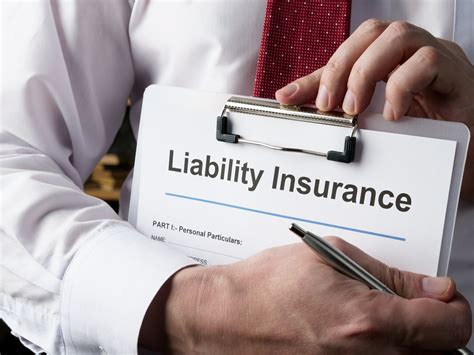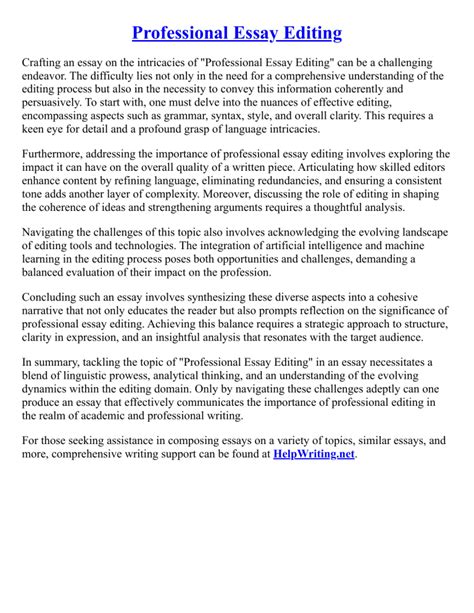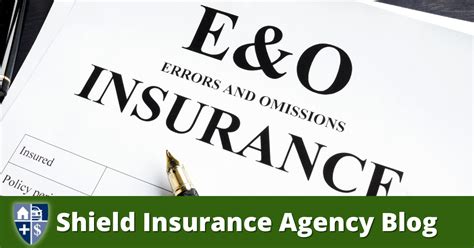Professional Liability Insurances

Professional liability insurance, often referred to as errors and omissions (E&O) insurance, is a critical component of risk management for businesses and professionals across various industries. This type of insurance provides protection against claims arising from alleged negligence, errors, or omissions in the services rendered by a professional or a business. With the increasing complexity of modern business operations and the rising expectations of clients, the need for professional liability coverage has become more pronounced than ever.
In this comprehensive guide, we will delve into the intricacies of professional liability insurance, exploring its significance, coverage options, and the key considerations for businesses and professionals looking to safeguard their operations and reputations. Whether you're a business owner, a freelancer, or a professional in a specialized field, understanding the nuances of this insurance coverage is essential to navigate the complex landscape of liability risks.
Understanding Professional Liability Insurance

Professional liability insurance is a specialized form of coverage designed to protect professionals and businesses against potential claims resulting from their work. Unlike general liability insurance, which covers bodily injury and property damage claims, professional liability insurance focuses on the services provided and the expertise offered by the insured.
Here's a closer look at the key aspects of professional liability insurance:
Coverage Trigger
Professional liability insurance policies are typically triggered by an error, omission, or act of negligence in the provision of professional services. This could range from a mistake in a financial report to an oversight in legal advice or a failure to meet the required standard of care in a medical procedure.
Coverage Scope
The scope of coverage can vary significantly depending on the nature of the business or profession and the specific policy terms. Generally, professional liability insurance covers:
- Legal Defense Costs: The policy can provide financial assistance for legal fees and expenses associated with defending against a claim, even if the claim is ultimately unfounded.
- Damages and Settlements: If a claim is proven and a judgment or settlement is reached, the policy may cover the financial compensation awarded to the claimant.
- Reputational Protection: Beyond the financial implications, professional liability insurance can help mitigate the reputational damage that often accompanies a liability claim.
Exclusions and Limitations
While professional liability insurance offers valuable protection, it is not an all-encompassing solution. Exclusions and limitations are common in these policies, and it’s crucial for professionals and businesses to understand these restrictions. Common exclusions may include:
- Willful Misconduct: Intentional acts of wrongdoing are typically not covered.
- Criminal Activities: Professional liability insurance does not cover criminal acts or fraudulent practices.
- Contractual Liability: Some policies may exclude liability arising from breach of contract claims.
- Intellectual Property Infringement: Claims related to copyright, trademark, or patent infringement may be excluded.
The Importance of Professional Liability Insurance

In today’s litigious environment, professional liability insurance is a critical risk management tool for several reasons. Here’s why it should be a priority for businesses and professionals:
Protection Against Financial Loss
A single liability claim can result in significant financial burdens, including legal fees, settlements, and potential business interruption. Professional liability insurance provides a financial safety net, ensuring that businesses and professionals can weather the storm of a claim without devastating financial consequences.
Reputational Safeguard
In the age of information, a liability claim can quickly spread across various media platforms, potentially damaging a professional’s or a business’s reputation. Professional liability insurance offers a mechanism to address claims promptly and efficiently, helping to mitigate the reputational fallout.
Client Confidence and Trust
Clients, especially in highly specialized industries, often seek assurance that their service providers have adequate insurance coverage. Having professional liability insurance demonstrates a commitment to client protection and can enhance trust and confidence in your business or practice.
Compliance and Industry Standards
Certain industries and professions have specific regulatory requirements or industry standards that mandate the purchase of professional liability insurance. Failing to comply with these requirements can lead to legal and professional consequences.
Coverage Options and Considerations
When exploring professional liability insurance options, businesses and professionals should carefully consider their unique needs and potential risks. Here are some key factors to keep in mind:
Policy Limits
Policy limits refer to the maximum amount the insurance company will pay for a single claim or in aggregate over the policy period. It’s essential to select policy limits that align with the potential severity of claims in your industry.
Retrospective Coverage
Some professional liability policies offer retrospective coverage, which means that claims made during the policy period can be traced back to services provided prior to the policy’s effective date. This type of coverage can be advantageous for businesses with long-standing clients or projects.
Claims-Made vs. Occurrence Policies
Professional liability insurance policies can be structured as either claims-made or occurrence policies. Claims-made policies cover claims made during the policy period, regardless of when the service was provided. Occurrence policies, on the other hand, cover claims arising from services provided during the policy period, even if the claim is made after the policy expires.
Endorsements and Customization
Many professional liability insurance policies can be tailored to the specific needs of the insured through endorsements. These endorsements can expand or modify the coverage to address unique risks or industry-specific requirements.
Cost and Premium Considerations
The cost of professional liability insurance can vary significantly based on factors such as the industry, the size of the business, the claims history, and the coverage limits. It’s crucial to strike a balance between adequate coverage and a sustainable premium.
Real-World Examples of Professional Liability Claims
To illustrate the importance of professional liability insurance, let’s examine a few real-world scenarios where this coverage played a critical role:
Example 1: Legal Services
Scenario: A law firm provides advice to a client regarding a complex business transaction. Unfortunately, an oversight in their research leads to a significant financial loss for the client. The client files a claim against the law firm, seeking compensation for their losses.
Outcome: With professional liability insurance in place, the law firm is able to defend the claim and, if necessary, provide compensation to the client without jeopardizing the firm's financial stability. The insurance policy covers the legal defense costs and any settlements reached.
Example 2: Medical Practice
Scenario: A healthcare provider fails to diagnose a patient’s condition, resulting in a delayed treatment plan and potential long-term health complications for the patient. The patient files a malpractice claim against the healthcare provider.
Outcome: Professional liability insurance steps in to provide coverage for the legal defense and potential damages. The insurance policy ensures that the healthcare provider can focus on patient care without the financial burden of a liability claim.
Example 3: Financial Services
Scenario: An investment advisor provides advice to a client, but due to a misunderstanding or an error, the client’s portfolio incurs significant losses. The client files a claim against the advisor, alleging negligence.
Outcome: The investment advisor's professional liability insurance policy covers the costs associated with defending the claim and provides compensation if the claim is proven. This coverage helps maintain the advisor's reputation and financial stability.
Future Implications and Industry Trends

As the business landscape continues to evolve, the role of professional liability insurance is likely to become even more critical. Here are some key trends and future implications to consider:
Emerging Risks
The rise of new technologies and business models introduces novel risks. For example, cybersecurity breaches and data privacy concerns are becoming more prevalent, creating a need for specialized coverage extensions within professional liability policies.
Regulatory Changes
Regulatory environments are subject to change, and businesses must stay updated on any new requirements or standards that may impact their professional liability coverage. Non-compliance can lead to significant legal and financial penalties.
Industry Consolidation
As certain industries consolidate, the landscape of professional liability insurance may shift. Larger players may have more negotiating power when it comes to insurance terms and coverage, while smaller businesses may face unique challenges.
Risk Management Strategies
Professional liability insurance should be part of a broader risk management strategy. Businesses and professionals should actively work to identify and mitigate potential risks, implement robust internal controls, and stay informed about industry best practices.
Client Education
Informed clients are more likely to appreciate the value of professional liability insurance. Educating clients about the importance of this coverage can foster stronger relationships and demonstrate a commitment to their protection.
Conclusion
Professional liability insurance is an indispensable tool for businesses and professionals seeking to protect their operations, reputations, and financial stability. By understanding the nuances of this coverage, professionals can make informed decisions to safeguard their practices and businesses can navigate the complex world of liability risks with confidence.
What are the key differences between professional liability insurance and general liability insurance?
+Professional liability insurance, also known as errors and omissions (E&O) insurance, specifically covers claims arising from errors or omissions in the services provided by a professional or business. On the other hand, general liability insurance covers more common risks like bodily injury, property damage, and personal injury claims that may occur on business premises or as a result of business operations. While both types of insurance are important, they address different types of risks and are often complementary in a comprehensive risk management strategy.
How can I determine the appropriate policy limits for my professional liability insurance?
+Determining policy limits can be complex and often depends on the nature of your business and the potential severity of claims. As a starting point, consider the maximum amount you could afford to pay out of pocket for a claim. Additionally, review industry benchmarks and consult with an insurance broker or risk management specialist who can provide insights based on your specific circumstances. Remember that higher policy limits may provide greater protection but also result in a higher premium.
Are there any industries or professions that are particularly susceptible to professional liability claims?
+Yes, certain industries and professions are inherently more vulnerable to professional liability claims due to the nature of their work and the potential for errors or omissions. Some examples include legal services, medical practices, financial advisory services, engineering firms, and technology-based businesses. These industries often face complex and high-stakes decisions, increasing the likelihood of claims.
How can I mitigate the risk of professional liability claims in my business or practice?
+Mitigating professional liability risks requires a multi-faceted approach. First, ensure that you have adequate insurance coverage and regularly review your policy to ensure it aligns with your business needs. Additionally, implement robust internal controls and risk management practices, such as thorough documentation, regular staff training, and adherence to industry standards and best practices. By being proactive in identifying and addressing potential risks, you can reduce the likelihood of claims.



